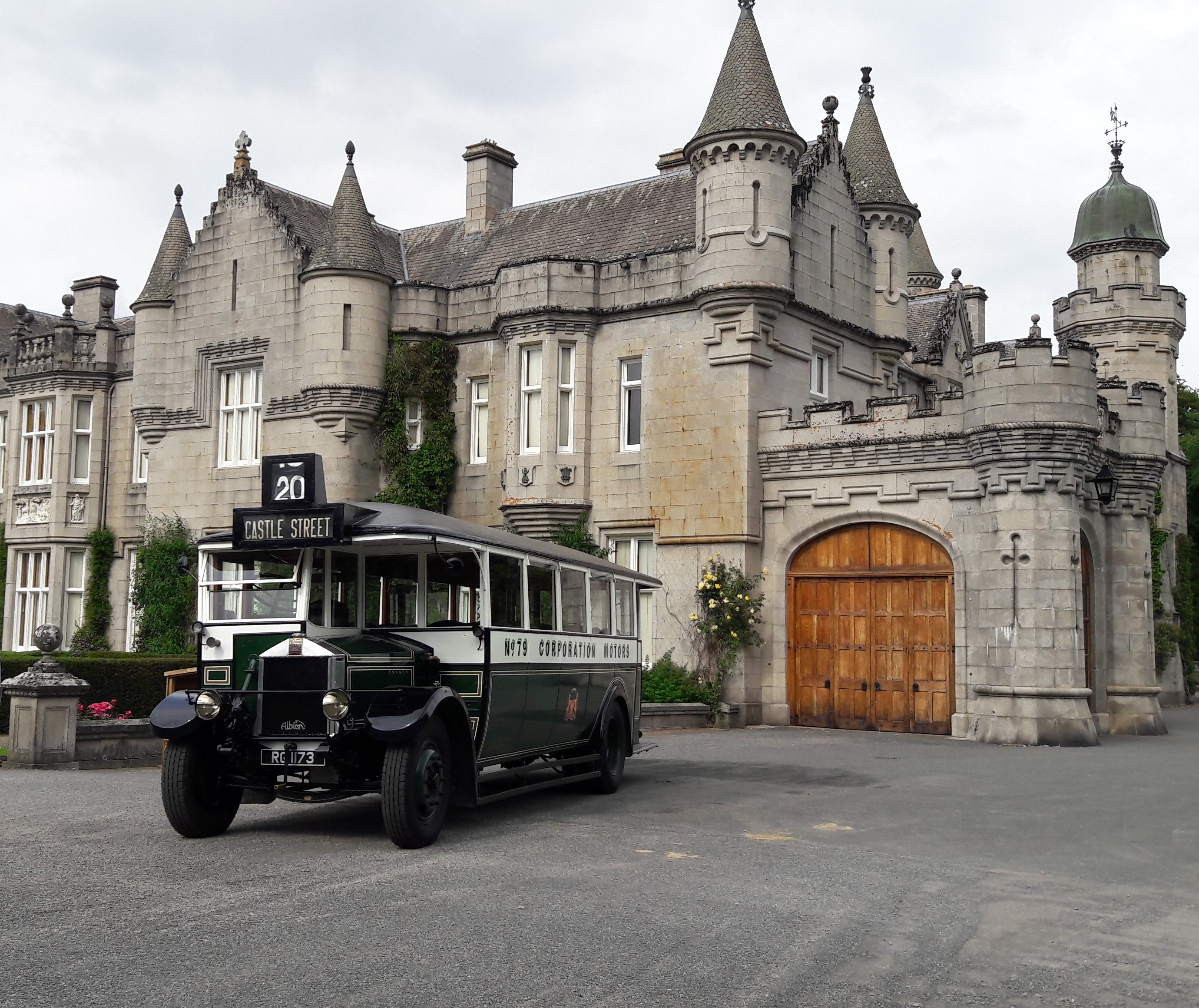The History
The 1920s was the decade of the most remarkable improvements in motorbus technology during the twentieth century. ACT 79 incorporates some but not all of the advances, such as the half cab layout with the driver alongside the front engine, pneumatic tyres, and the cranked/low height chassis. It still has a 4 cylinder, side valve, petrol engine, and it does not have power assisted braking. Indeed, when new it probably had braking on the rear wheels only - and the engine had to be hand started.
ACT 79 was new to Aberdeen Corporation in May 1930 and featured the then commonplace Albion PMA28 chassis and local bodywork by William Walker of Kittybrewster. At this point in time Corporation motorbus services were expanding rapidly as new public and private housing was being built. Double deck motorbuses were not adopted by the Corporation for another year and 79 is thus a typical Aberdeen Corporation bus of the period. The rear entrance bodywork was also normal for the Corporation at this time; it is timber framed and has thin gauge steel panelling, aluminium panelling being a few years into the future.
Following the outbreak of the Second World War, 79 was one of over 50 from the Corporation’s fleet of single decker’s to be conscripted for war service. Latterly used by the Ministry of Works and Buildings in London, it was subsequently disposed of to a south London household to lodge a displaced family from Europe. In an advanced state of dilapidation, the remains of the bus were offered for preservation in 1987 and through the details on the Albion chassis plate 79’s identity was recovered. The recently created Grampian Regional Transport Ltd adopted the vehicle which was repatriated and then rebuilt over a number of years in Aberdeen.
ACT 79 is now in the care of First Group Heritage Trust and is maintained to public service standards. A major engine overhaul carried out in 2017 included the fitting of a starter motor.

